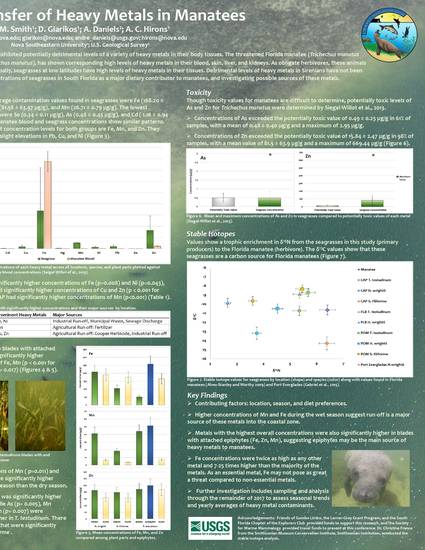
In recent decades, manatees and dugongs globally have exhibited potentially detrimental levels of a variety of heavy metals in their body tissues. The threatened Florida manatee (Trichechus manatus latirostris), which is a subspecies of the West Indian manatee (Trichechus manatus), has shown corresponding high levels of heavy metals in their blood, skin, liver, and kidneys. As obligate herbivores, these animals rely heavily upon seagrasses as a major component of their diet. Globally, seagrasses at low latitudes have high levels of heavy metals in their tissues. Detrimental levels of heavy metals in Sirenians have not been established until now. This study is assessing the heavy metal concentrations of seagrasses in South Florida as a major dietary contributor to manatees, and investigating possible sources of these metals.
Available at: http://works.bepress.com/amy-hirons/54/
